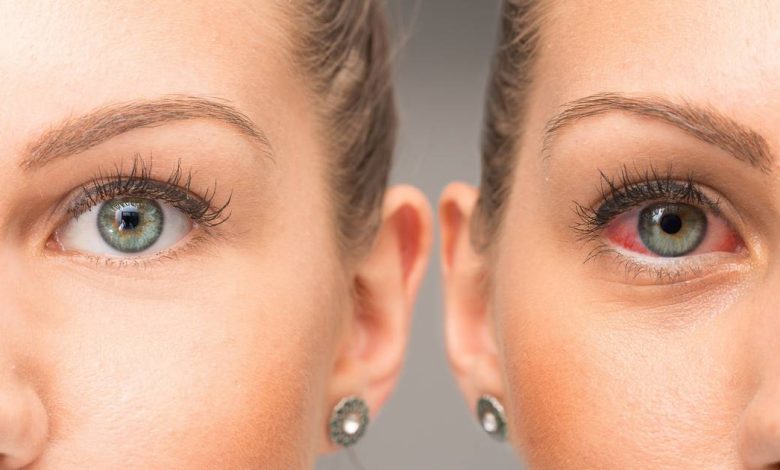eye pain, ophthalmalgia: What's it, causes, symptoms, diagnostics, treatment, prevention

Eye pain; Ophthalmalgia; Pain – eye
What is eye pain?
Pain in the eyes is an unpleasant sensation, which can range from aching to throbbing or burning pain. It may also seem, a foreign object in the eye.
It can occur in one eye or both eyes., It can be mild, moderate or severe. Eye pain can be caused by an underlying eye disease or disease, and may also be the result of environmental factors.
Causes of eye pain
Pain in the eyes can be caused by various diseases., including, among other things:
- Corneal abrasion (scratch on the cornea)
- Glaucoma
- Uveitis (inflammation of the middle membrane of the eye)
- Eye infections
- Migraine
- Herpes zoster (shingles) eye
- Dryness of the eyes
- Keratitis (inflammation of the cornea)
- Foreign body in the eye
- Eye injury
Besides, Environmental factors, which can cause eye pain, include:
- Exposure to wind or dust
- Prolonged work at the computer screen
- Prolonged wearing of contact lenses
- Exposure to bright light
Eye pain symptoms
Symptoms of eye pain can vary depending on the underlying cause.. Common symptoms of eye pain include:
- Blurred vision
- Burning or tingling
- Headache
- Sensitivity to light
- Increased lacrimation.
- Pain on eye movement
When to contact a healthcare professional
If you are experiencing any of the following eye pain symptoms, you should contact your doctor or ophthalmologist immediately:
- Strong pain, which does not pass
- Pain in or around the eye, aggravated by eye movement.
- eye swelling
- Viewing problems
- Rash around the eyes
- Fever
Questions, that your doctor may ask
Your doctor may ask you various questions about your symptoms and medical history., including:
- When did you get symptoms?
- Do your symptoms appear in one or both eyes??
- How do you think, what environmental factors can contribute to eye pain?
- Have you had a recent eye injury?
- Are you currently taking any medications or supplements?
- What other diseases do you have?
Diagnosis of pain in the eyes
Doctor, probably, start with a comprehensive eye exam, to check your vision and the health of your eyes. Your doctor may also perform a slit lamp examination., which is a kind of microscope, used to examine the inside of the eye. If your doctor suspects, that the cause of the pain is an eye or medical condition, he may order additional tests, such as x-ray, computed tomography or magnetic resonance imaging.
Your doctor may also ask for a tear sample., to rule out infection. He will also check for signs of an allergic reaction., such as redness and itching in the eyes.
Eye pain treatment
Treatment for eye pain will depend on the underlying cause.. Your doctor may recommend prescription drops or antibiotics to treat an eye infection.. For corneal abrasions, the doctor may prescribe an antibiotic ointment.. If eye pain is caused by dry eyes or allergies, you may be recommended over-the-counter anti-inflammatory drops. If your doctor suspects glaucoma, he can recommend medication, laser therapy or surgery.
home treatment for eye pain
- Recreation. You should avoid any activity, which can strain or irritate the eyes, such as driving a car or operating machinery.
- Cold compress. A cold compress can be applied to the eyes, to reduce pain and swelling. Wrap a cold cloth or ice pack in a thin towel and apply to your eyes for 10-15 minutes at a time.
- Eye drops. If your doctor recommends using over-the-counter eye drops, follow all instructions on the package. Never use expired eye drops.
- artificial tears. Artificial tears soothe the eyes and temporarily relieve dryness and itching.
- Dream. Getting enough sleep can help reduce eye pain and fatigue.
Prevention of eye pain
You can help prevent or reduce the risk of eye pain, following these tips:
- Protect your eyes. Wear safety glasses, when playing sports or working in areas with a potential eye hazard, e.g. when working with wood.
- Wear sunglasses. Wearing UV-protective sunglasses will help protect your eyes from the harmful effects of the sun..
- Give your eyes a break. If you work at the computer for a long time, take frequent breaks, to take your eyes off the screen and rest your eyes. Try to keep the monitor at least 18 inches from face.
- Stay hydrated. Drinking plenty of fluids can help prevent eye dehydration, which will reduce the risk of dry eyes.
- Kontrolyruyte pryem of drugs.Some medications, such as diuretics, may increase the risk of eye pain. Talk to your doctor, if you are taking any medication, that may contribute to your symptoms.
Used sources and literature
Cioffi GA, Liebmann JM. Diseases of the visual system. In: Goldman L, Schafer AI, eds. Goldman-Cecil Medicine. 26th ed. Philadelphia, PA: Elsevier; 2020:chap 395.
Dupre AA, Wightman JM. Red and painful eye. In: Walls RM, Hockberger RS, Gausche-Hill M, eds. Rosen’s Emergency Medicine: Concepts and Clinical Practice. 9th ed. Philadelphia, PA: Elsevier; 2018:chap 19.
Pane A, Milloer no, Burdon M. Unexplained eye pain, orbital pain or headache. In: Pane A, Miller NO, Burdon M, eds. The Neuro-ophthalmology Survival Guide. 2nd ed. Philadelphia, PA: Elsevier; 2018:chap 12.
Swartz MH, Hirshaut v. The eye. In: Swartz MH, ed. Textbook of Physical Diagnosis: History and Examination. 8th ed. Philadelphia, PA: Elsevier; 2021:chap 10.
